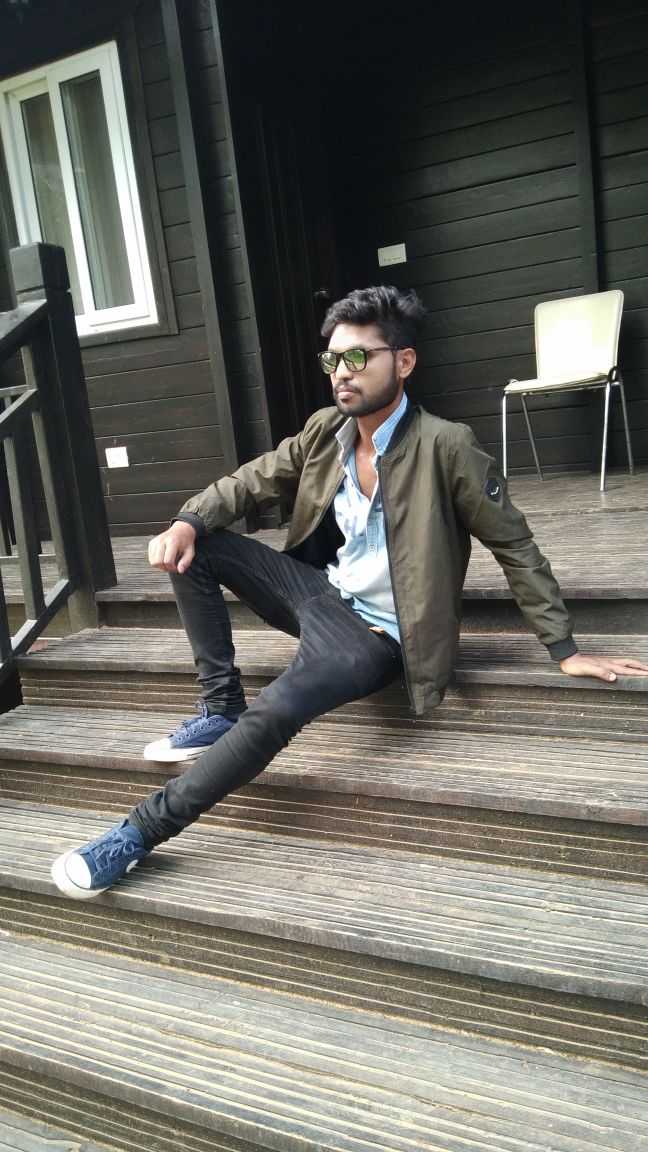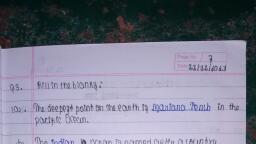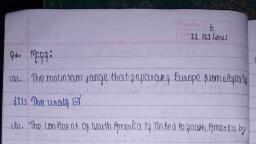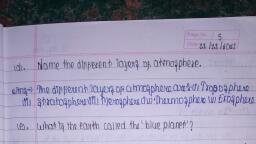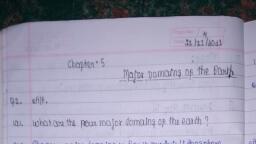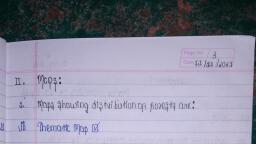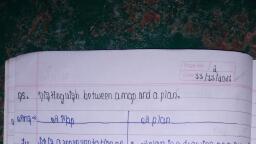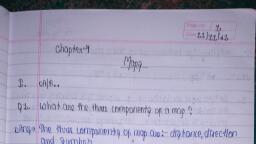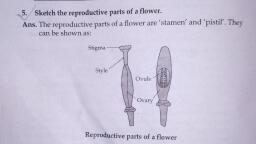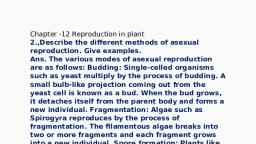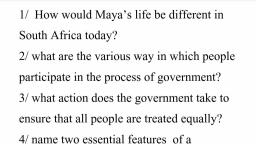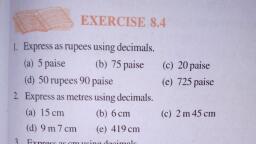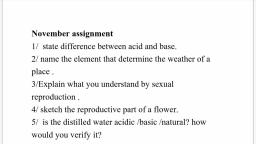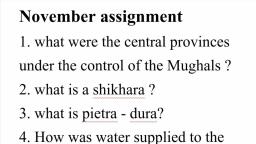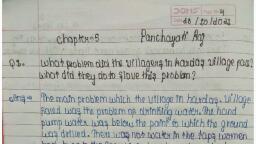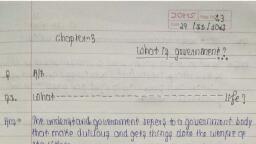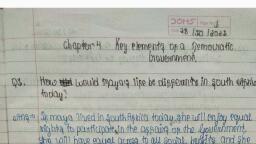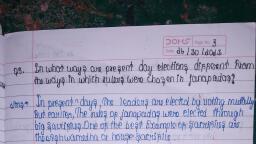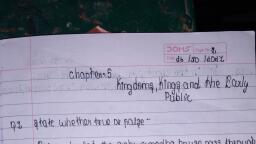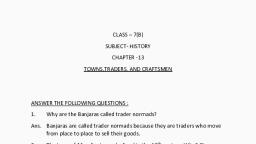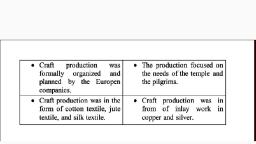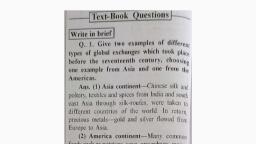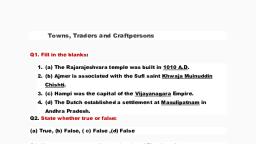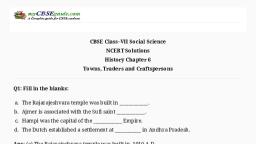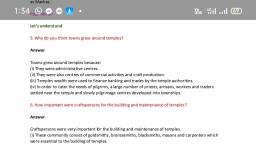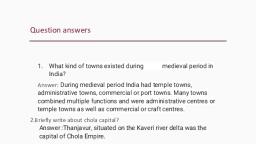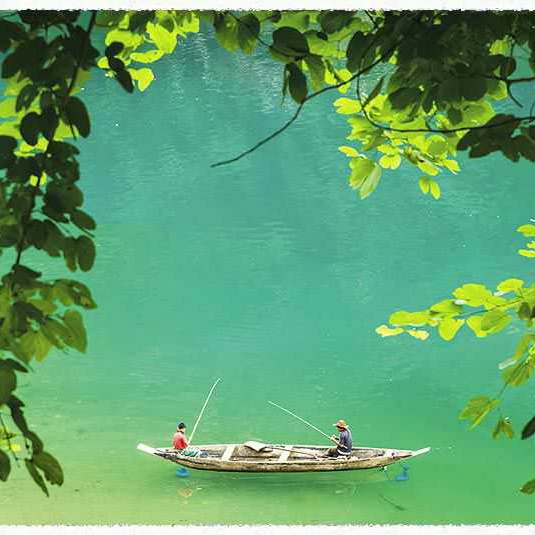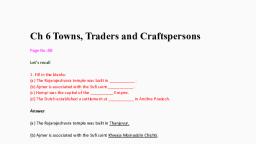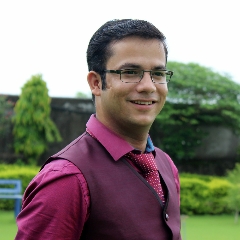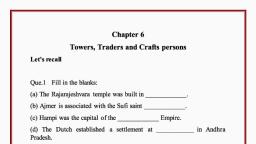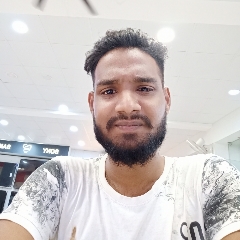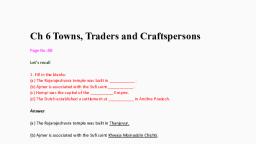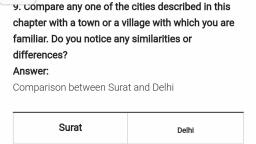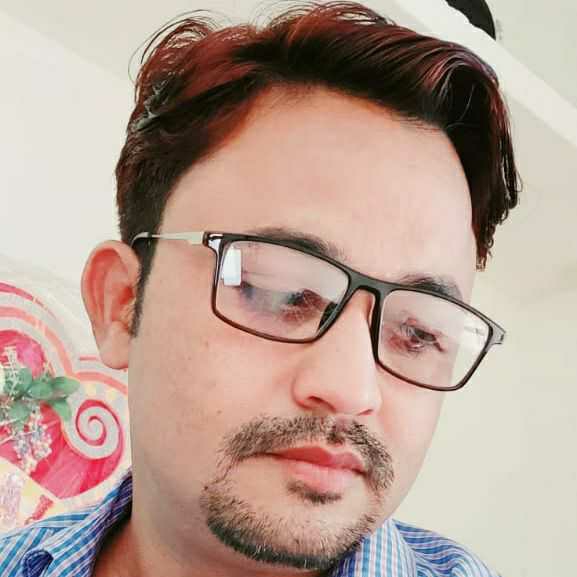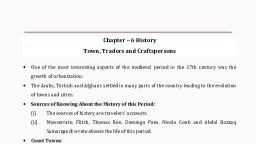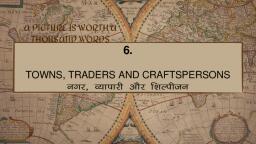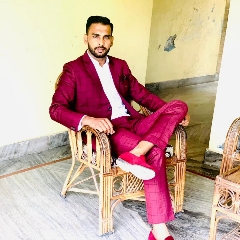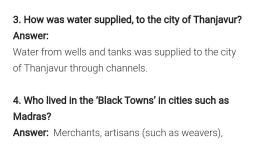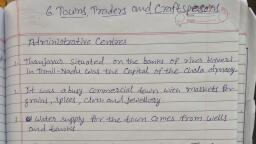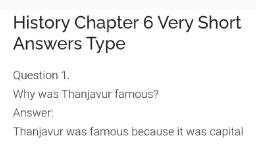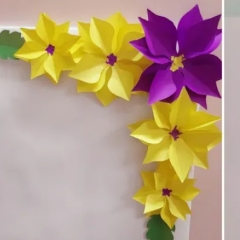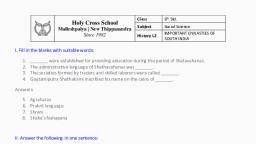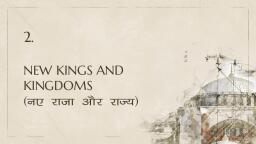Page 1 :
Success convent higher secondary School jagdalpur, Chapter – 6 towns, traders and craftspersons, Q.1. Fill in the blanks:, (a) The Rajarajeshvara temple was built in --------, (b) Ajmer is associated with the Sufi Saint ---------, (c) Hampi was the capital of the ---------Empire., (d) The Dutch establisheda settlement at -------------- in Andhra Pradesh., Ans. (a) Eleventh century, (b) Khwaja Muin-ud-din Chishti, (c) Vijayanagara, (d) Masulipatnam, Q.2. State whether true or false:, (a) We know the name of the architect of the Rajarajeshvara temple from an inscription., (b) Merchants preferred to travel individually rather than in caravans., (c) Kabul was a major centre for trade in elephants., (d) Surat was an important trading port on the Bay of Bengal., Ans. (a) True (b) False (c) False (d) False, Q3. How was water supplied to the city of Thanjavur?, Ans. Thanjavur was the capital city of the Cholas around thousand years ago, and water was supplied to the city of Thanjavur from wells and tanks., Q.4. Who lived in the "Black Towns" in cities such as Madras?, Ans. "Black towns" were established by European companies and merchants. Artisans, weavers, traders and craftspersons of Indian on local origin lived there., Q.5 . Why do you think towns grew around temples ?, Ans . Temples have always played a significant role in India . Besides being the places of worship , the temples have served as economic , academic and administrative centres . These temple towns developed mainly under the royal patronage . The rulers built temples and generously donated land and money to show for their religious devotion and piety . Pilgrims , who visited these places , also made donations ., Q.6 . How important were craftspersons for the building and maintenance of temples ?, Ans . Craftspersons were important for the building and maintenance of temples because temples of those times were very beautiful not only stones were carved out , but also gold and inlay work was done . So , without these craftspersons , it was not possible for the kings to construct and maintain such large and magnificent temples . Hence , the role of craftspersons was very important in construction of these temples . It required some specialised people to do such work ., Q.7 . Why did people from distant lands visit Surat ?, Ans . Surat grew as a major commercial city and a centre of economic prosperity . It was an emporium of trade with West Asia via Gulf of Ormuz . Its economy revolved around buying and selling of a wide variety of goods . The city did not produce all goods that were traded there . It drew its merchandise from as far as Agra in north and Wengurla on the western coast . The soul of the city was its market ., Q.8 . In what ways was craft production in cities like Calcutta different from that in cities like Thanjavur ?, Ans . The city of Calcutta was basically developed by the Europeans . Demand for goods such as textiles increased and therefore , crafts of spinning , weaving , bleaching , dyeing , etc. , were in great demand . Indian textile designs were refined but in Thanjavur , crafts were very different from it . Weavers used to produce cloth for temples , for kings and nobility , and for the masses . It means the craft of Thanjavur was in its backward stage , but craft of Calcutta was in its advanced stage ., Q.9. Compare any one of the cities described in this chapter with a town or a village with which you are familiar. Do you notice any similarities or differences ?, Ans. We can compare the ancient city of Thanjavur with the modern city of Mumbai . We can see many similarities and differences in both of them which are given below : Similarities : Thanjavur was the center of economic activities under the Chola dynasty , and the same is in the case of Mumbai . Thanjavur was the center of power where palaces with mandapas were there and kings used to issue orders to their subordinates. Same is in the case of Mumbai which is also a center of power where the Chief Minister and other ministers issue orders to their subordinates. In both the cities , a number of markets exist where traders sell grains , spices , cloths , jewellery , etc. Differences : If there are certain similarities in both the cities then certain differences are also there in them . Thanjavur was the capital of the Chola kingdom, but Bombay is not the capital of the country. Thanjavur was under direct influence of the king but Bombay is under direct influence of the Chief Minister of Maharashtra which is only a small state of the larger country of India . Thanjavur was also known as temple town because a number of temples were there in Thanjavur . But , Mumbai is mainly the hub of economic activities of the country and a very less number of temples are there in it, . Q.10 . What were the problems encountered by merchants ? Do you think some of these problems persist today ?, Ans. Merchants in the medieval age had to face a number of problems which are given below:, Merchants in those days used to pass through many kingdoms and forests. Therefore, they had to travel in caravans instead of individually. It was so because, in case of individual journey, they faced the danger of getting looted by dacoits or attacked by wild animals. (ii) No roads and means of modern transport were there because of which they had to move to other countries by roads on bullock carts, camels, elephants, etc. , which was a very time consuming process., ( iii ) As they had to go through many kingdoms , they had to pay taxes to every kingdom . Even temples were used for collecting taxes from the traders., ( iv ) It was right that the traders had made their guilds but these guilds were of no use in case of any danger coming towards them ., In present days, they do not face these problems. Traders send their goods by ships or by planes which takes very less time. There is no need to give taxes to each kingdom because ships and cargo planes travel through air or water where no tax is charged . Most importantly , the burden of taxes is borne by consumers and not by traders ., Q.11 . Find out more about the architecture of either Thanjavur or Hampi , and prepare a scrap book illustrating temples and other buildings from these cities ., Ans. Classroom activity., Q.12 . Find out about any present - day pilgrimage centre. Why do you think people go there? What do they do there? Are there any shops in the area ? If so , what is bought and sold there ?, Ans. Classroom activity.
